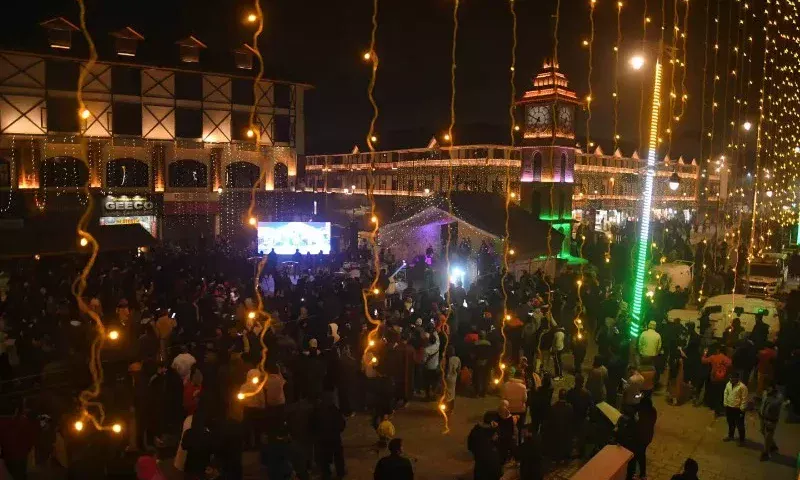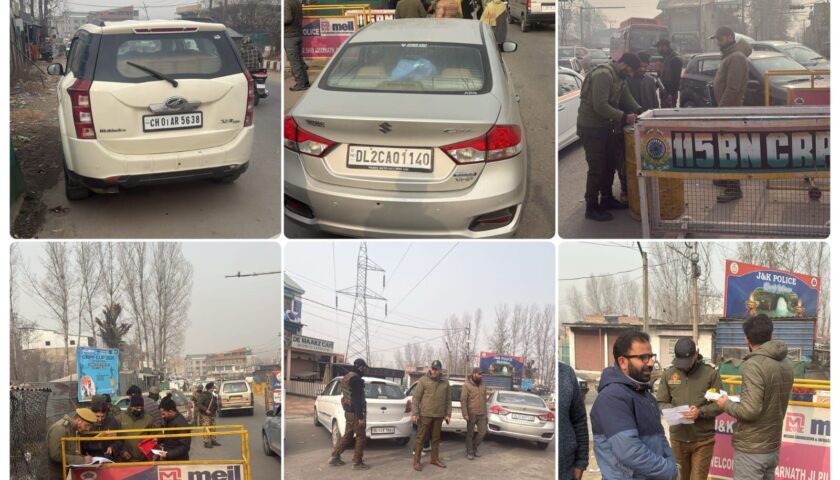How a small shawl maker in Kashmir is helping women artisans revive the traditional spinning wheel craft.
By: Irshad Hussain
At a time when technology has replaced many traditional livelihoods, women in Kashmir are trying their best to preserve the spinning wheel craft with foot-operated charkhas.
In the Eidgah area of Srinagar, a small, family-run shawl manufacturing company called Me and K has provided 300 modern table-top spinning wheels to local women and trained them to spin pashmina and silk threads. The women earn up to Rs. 5,000 a month, with most of them working from home.
Mujtaba Kadri, 46, co-founder of meandk.com, started this initiative in 2021. He introduced a modern table-top charkha that is foot-operated and doubles production. It is also safer for the women artisans, who previously complained of back pain when using traditional spinning wheels.
The spinning wheels are set up on a table so that the artisans do not have to sit on the floor to spin. Fahmeedah Akhter, 47, an artisan at Me and K, says that she was given full support by her family to pursue this work. “This is an opportunity for a stable source of income, and it allows me to work comfortably from home. My life has improved since I started spinning pashmina; I started making money without leaving the house,” she said.
Kadri says that he started the business because he wanted to help the women in his neighbourhood and give them a path for financial independence and personal development. His company decided to distribute table-top charkhas among the area’s women.
“As part of our commitment, we have given these foot charkhas to 300 women free of cost. The charkhas are made in Kashmir by our carpenters. They cost Rs.7,000 each,” Kadri said.
The spinning wheel is locally called “yender” in Kashmir and is considered an important part of Kashmiri tradition, used to spin wool or pashmina. It is believed that in the 14th century, Hazrat Mir Syed Ali Hamdani, a revered Iranian figure also known as “Shah Hamdan”, introduced the pashmina craft to Kashmir.
The fleece of the domesticated, high-altitude Himalayan Capra hircus goat, a unique species of goat found in the Himalayan region of Ladakh, is used to make pashmina shawls. The government has established a quality mark for genuine Pashmina that identifies products made using the genuine “pashm” fibre obtained from goats found in Ladakh of the Kashmir region. It has been granted a Geographical Indication (GI) label called Kashmir Pashmina.
The process of verification and stamping is done in Srinagar’s Craft Development Institute. Before being stamped, Kashmir Pashmina items undergo quality control inspections that use electronic microscopy as well as physical and chemical testing.
“This was an effort to keep the hand-woven pashmina tradition alive. Online tracking of the product’s maker, his contact information, and his address are also given on the registration number of the stamp,” an official said.
In Kashmir, in the 1980s, spinning pashmina used to once be predominantly the job of young women, with thousands of them across Kashmir engaged in the craft. Zoona Begam, 59, once a pashmina artisan, says that because of the low pay of Re 1 per thread, the majority of women finally quit the craft. “Today, just a small number of women remain in the industry. If they don’t increase the pay, I don’t think modern charkhas alone will revive the craft,” Begam said.
Another artisan, Rubina Akhter, 30, left the craft because of a backache problem. “I heard that Me and K is providing an opportunity. If its charkhas are modern and one can work seated at a table, I will also join,” she said.
According to Kadri, the Kashmir government has now raised the pay for hand-spun pashmina from one rupee per thread to Rs.1.5 per thread. To ensure that vendors receive a higher wage, the government is also planning to implement a minimum support price, a government-regulated pricing policy that would set the starting price for a single pashmina shawl at Rs.12,500.
Both artisans and the government believe that the new spinning wheel will help revive the art. “The artisans are being paid Rs. 5,000 per month, but in coming years it could become around Rs. 15,000,” Kadri said.




